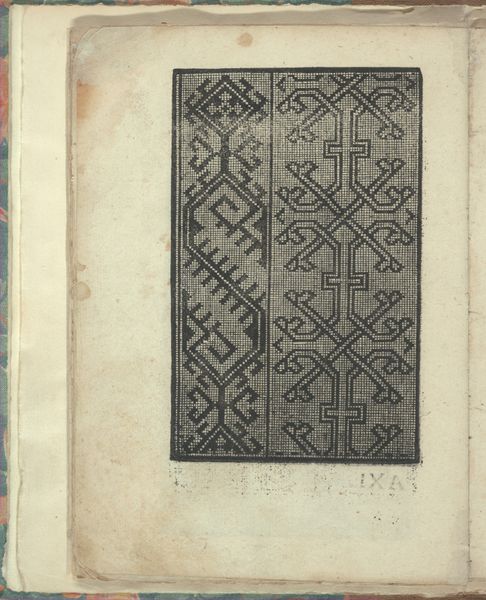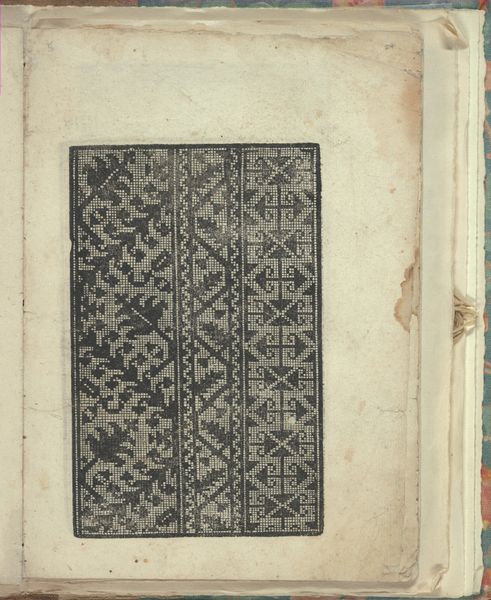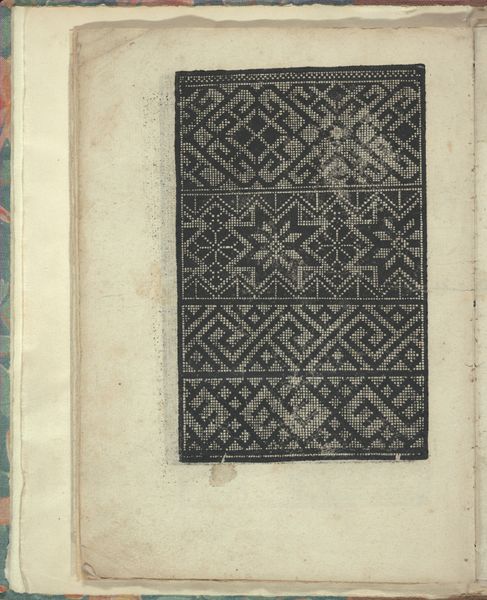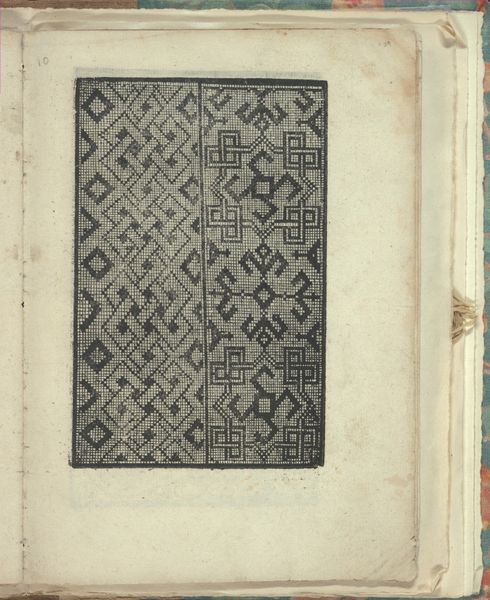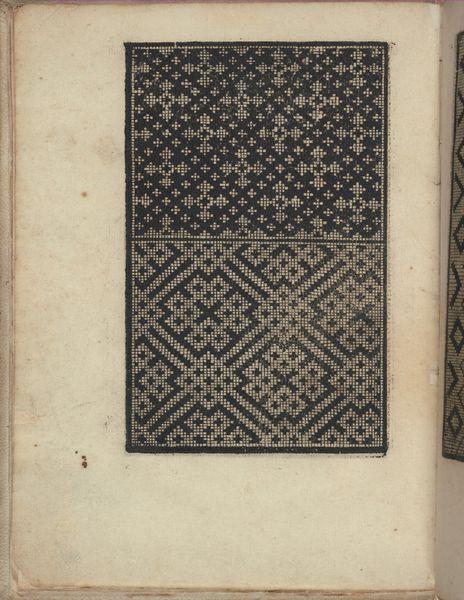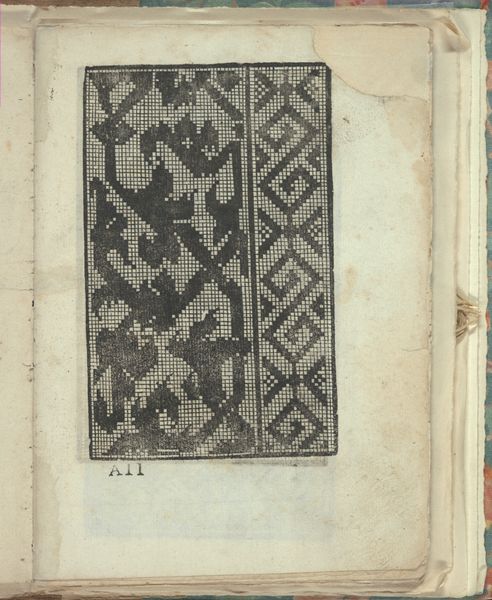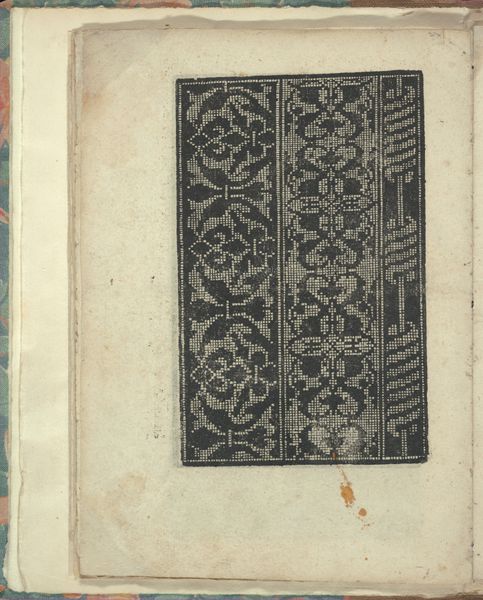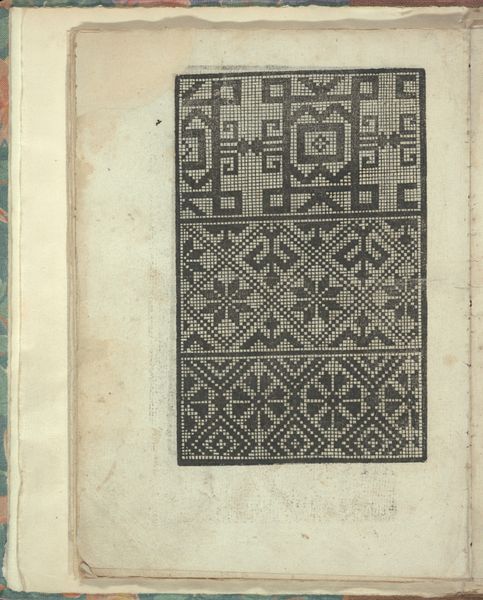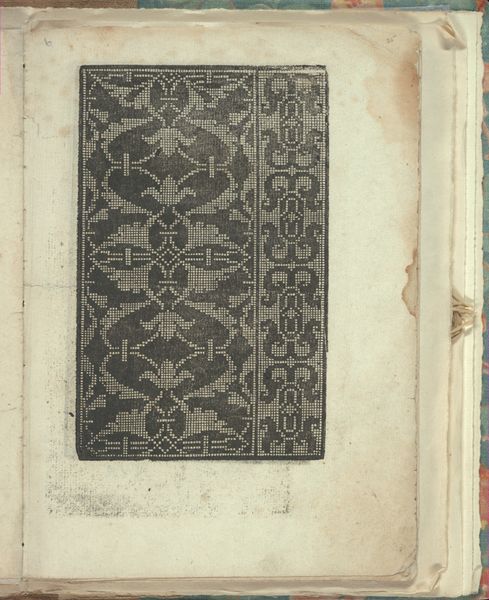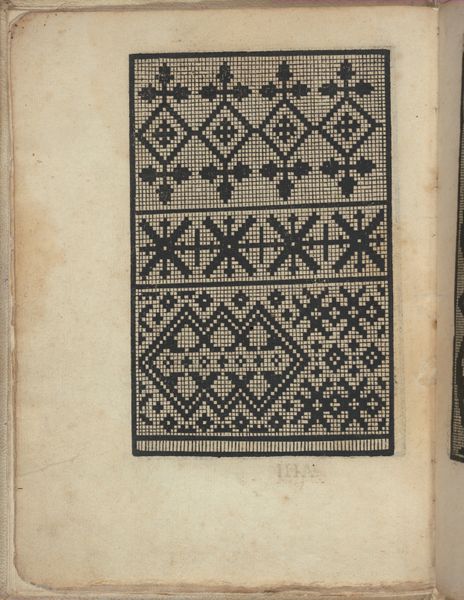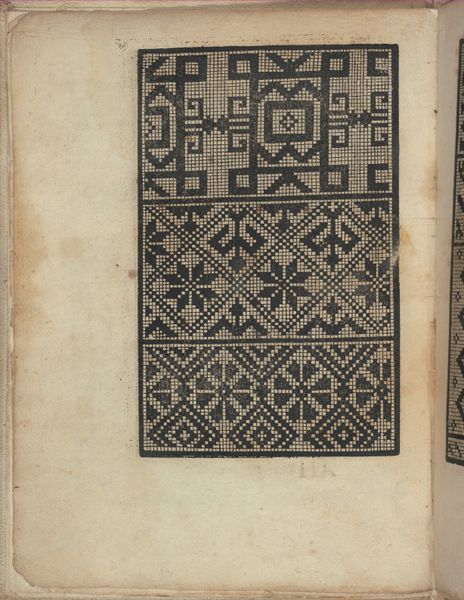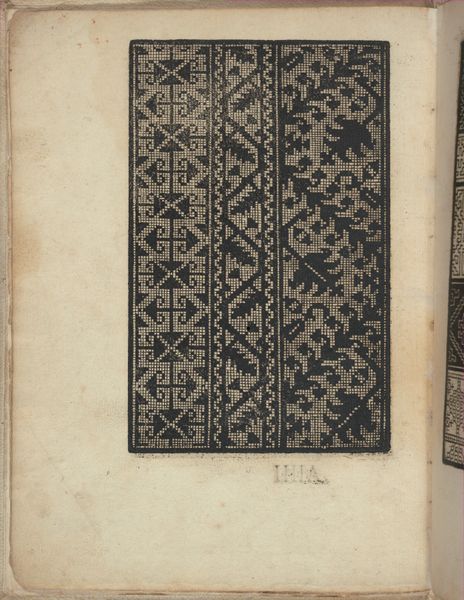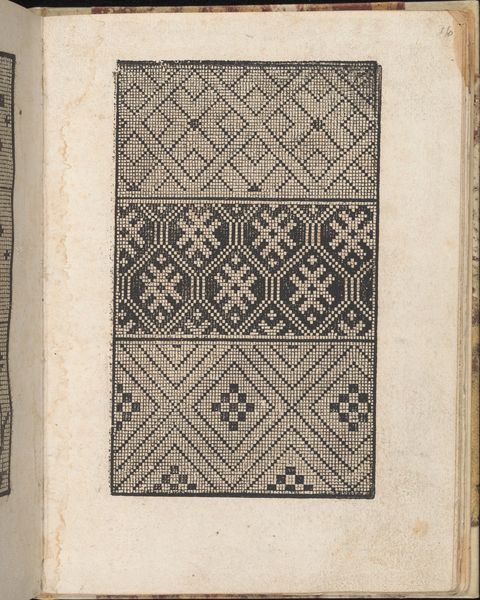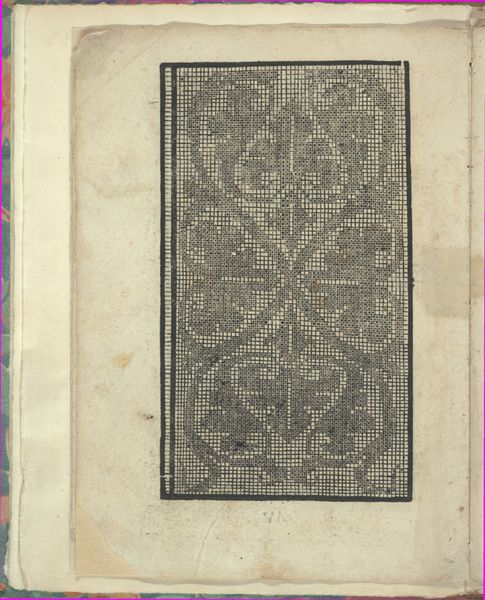
Opera Nova Universali intitulata Corona di racammi, page 15 (recto) 1530
0:00
0:00
drawing, print, paper
#
drawing
# print
#
paper
#
11_renaissance
#
geometric
#
decorative-art
#
italian-renaissance
Dimensions: Overall: 8 7/8 x 6 7/8 in. (22.5 x 17.5 cm)
Copyright: Public Domain
Curator: Welcome. Before us, we have a page from Giovanni Andrea Vavassore’s "Opera Nova Universali intitulata Corona di racammi," printed in 1530. Editor: Immediately, I'm struck by the density of the print and its graphic quality; the composition seems compartmentalized, segmented into bands. The overall effect is surprisingly modern for something so old. Curator: Indeed. Consider the historical context. Vavassore was part of a burgeoning print culture in Renaissance Italy. These pattern books were essentially instruction manuals for lacemakers and embroiderers— predominantly women. They offered access to design ideas and techniques, enabling participation in larger artistic and economic spheres. Editor: Absolutely, there's a captivating geometry at play, with variations on formal structures like, stripes, symmetry, and radial balance, yielding the artwork's aesthetic rhythm. I see some interesting forms repeating; the motif in the upper section recalls the shape of the Tree of Life. Curator: Symbolically, these patterns reflect societal values and gender roles. The act of needlework was inherently linked to female identity, virtue, and domesticity. The pattern book democratized access to design. Consider it in relation to women’s ability to self-fashion within cultural confines. It shows us much about artistic agency in a patriarchal society. Editor: The intricacy of the designs is captivating; the small scale of the repeated elements allows a rich visual vocabulary to arise from such tight, restricted form. I find myself getting lost in the dense weave of shapes and textures. Curator: Looking through the lens of contemporary theory, we can consider issues of authorship and appropriation. Did these designs merely reinforce restrictive cultural norms or could their very production challenge social constraints? These pattern books raise broader questions about art as a tool for reinforcing—or subverting—dominant power structures. Editor: Fascinating, it reveals such diverse insights and values within such a concise compositional package. Curator: I think considering the intersection of artistic form and socio-historical factors offers a richer understanding of this print’s continued relevance. Editor: And the beauty of a solid composition such as this will continue to offer much into the future as well.
Comments
No comments
Be the first to comment and join the conversation on the ultimate creative platform.
